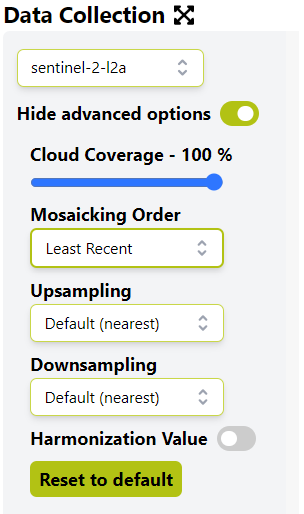Hi
given this link
it provide curl-command for getting ndvi values in time series.
i copied the curl-command to the request-builder and executed the command, and what i got is a tiff file with colors.
what i want to know is, how to get the ndvi values of a time series in a gray scale please
is that possible?please let me know how to achieve that
thanks


